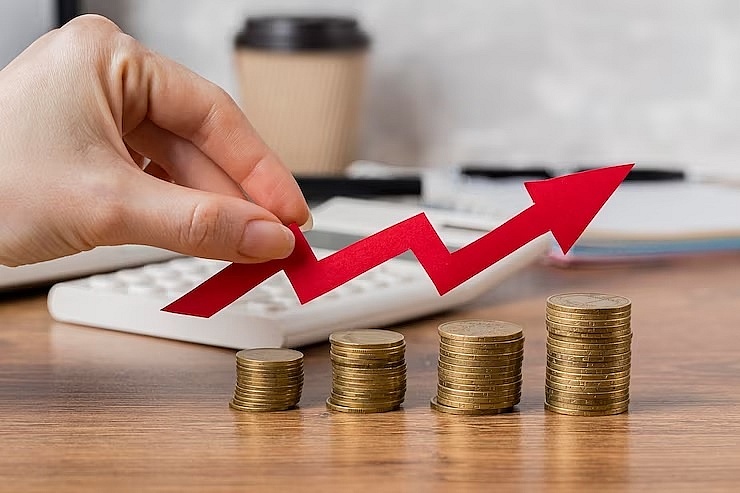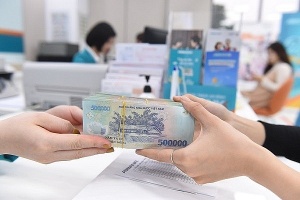Interest rate anchoring in US supporting VND status
 |
| Interest rate anchoring in US supporting VND status, illustration photo/ Source: freepik.com |
According to Nguyen Ba Hung, principal country economist at the Asian Development Bank (ADB) in Vietnam, the Fed’s decision to raise interest rates will have two significant impact mechanisms.
“Firstly, with higher interest rates, consumer spending tends to decrease, leading to a potential decrease or stagnation in imports. This, in turn, may affect Vietnam’s exports to the US, causing them to either decline or experience limited growth,” Hung said.
“Secondly, the Fed’s interest rate hike will likely drive capital flows towards the US, thereby exerting pressure on the exchange rate of the VND. This pressure on the VND could potentially lead to depreciation, especially if the State Bank of Vietnam (SBV) pursues a flexible exchange rate policy.”
Since the beginning of the year, the VND has depreciated by about 1.5 per cent, but this is insignificant compared to countries in the region such as Thailand or the Philippines, Hung added.
“This suggests that the policy of anchoring the exchange rate has helped the VND. The analysis indicates that the Fed’s interest rate hike has an impact on Vietnam more from a trade perspective rather than a monetary one,” said Hung.
Vietnam went against the tide by not following the trend of increasing interest rates in the world, as the SBV continuously lowered interest rates with the goal of supporting businesses and people. Yun Liu, economist in charge of ASEAN markets for the Global Economic Research Division at HSBC, said that inflation remained at a positive level and the SBV will further reduce interest rates in the second half of 2023.
“We expect the SBV to cut interest rates by another 50 percentage points, which will be the last rate cut in the current easing cycle. Recently, the SBV has also signalled that it is ready to take more measures if market conditions allow. Even so, we remain cautious of potential inflationary risks,” said Liu.
Nguyen Thi Phuong Thanh, analyst at VNDirect, forecasts that the average deposit interest rate of 12 months will drop to 6.0-6.2 per cent per year in the second half of 2023.
“Lending interest rates may fall more sharply in the second half of 2023 as the cost of capital of commercial banks is decreasing, thanks to the impact of the SBV’s interest rate cuts in the first six months of 2023 and its issuance of a circular allowing the extension of provision for bad debts. We believe that lower lending rates will be a factor in promoting the recovery of consumption and private investment in the coming quarters,” said Thanh.
According to Hung of the ADB, the monetary policy should focus on stimulating consumption based on the impact on deposit interest rates. Lower deposit interest rates will help improve personal consumption, and at the same time help banks reduce input cost pressure to lower lending rates. If inflation is estimated at 4 per cent, which can bring the deposit rate to about 5 per cent, there is still a real interest rate of 1 per cent.
“But, it is necessary to balance how to let interest rates fall slowly and then observe how much consumption has lifted. Strong and fast interest rates and the failure of the goods and services market to absorb all the capital will lead to the risk of asset bubbles,” Hung calculated.
The credit growth target is 14 per cent for the whole year of 2023, but in reality it is only 5 per cent at the moment. Hung said that if there is no change in fiscal policy, an increase in money supply will probably go to the stock or real estate market but, by their very nature, do not generate real business and value to the real economy.
“For example, boosting public investment will lead to workers getting jobs, raw materials being rotated, transportation recovering. Accordingly, businesses begin to have new credit needs to borrow capital, then low interest rates will bring value, achieving the desired effect. I would like to emphasise that we are still in need of policy coordination and not placing too much weight on monetary or fiscal,” said Hung.
 | Vietnamese businesses await relief as SBV slashes interest rates Vietnamese businesses anticipate some relief as the central bank slashes interest rates amidst the economic challenges, with credit growth expected to accelerate in the second half of 2023. |
 | Lower interest rates will not have significant impact on inflation Reducing interest rates now will not have a significant impact on inflation, according to Dr. Nguyen Tu Anh, director general of the Department of General Economic Affairs at the Central Economic Commission, in a discussion with Angela Nguyen of VIR. |
What the stars mean:
★ Poor ★ ★ Promising ★★★ Good ★★★★ Very good ★★★★★ Exceptional
Related Contents
Latest News
More News
- Stock market starts 2026 with growth and governance in focus (January 06, 2026 | 08:45)
- Cake by VPBank posts strong gains in scale and efficiency leveraging AI focus (January 05, 2026 | 18:55)
- Banks step up listing plans in 2026 to strengthen capital and transparency (December 31, 2025 | 18:59)
- Ho Chi Minh City projects $10.5 billion remittance inflows in 2025 (December 31, 2025 | 18:58)
- New decree sharpens enforcement in securities market (December 31, 2025 | 18:53)
- Gold market reform advances as SBV receives applications for bullion production (December 30, 2025 | 12:07)
- EVN and AFD sign credit agreement for Vietnam’s first pumped storage hydropower plant (December 30, 2025 | 10:06)
- Techcombank Priority Visa Signature unlocks a higher standard of living (December 29, 2025 | 16:44)
- Tax sector wraps up 2025 and sets priorities for next year (December 25, 2025 | 14:00)
- A tipping point for digital and hybrid wealth management in Vietnam (December 23, 2025 | 13:33)

 Tag:
Tag:




















 Mobile Version
Mobile Version